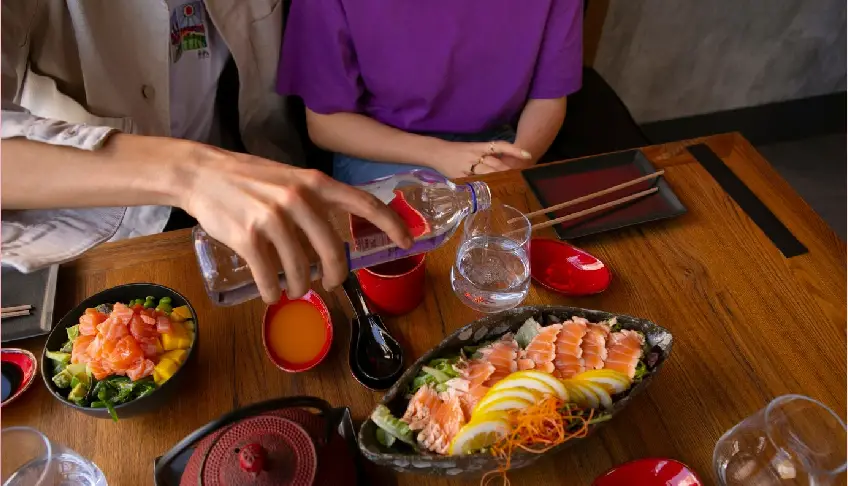A Beginner’s Guide to Japanese Dining Etiquette
A Beginner’s Guide to Japanese Dining Etiquette
Japanese dining is not simply consuming food; it is a centuries-old tradition based on respect, harmony and regard. Familiarity with Japanese etiquette can add depth to your dining experience and show consideration for the culture, whether in a classic ryōtei restaurant in Kyoto or in a nearby Japanese restaurant in Sydney. While customs may differ significantly by country or context, there are some general courtesy rules that diners should be aware of. This blog provides easy ways to gain confidence at the Japanese table.
- Before the Meal: Greetings and Rituals
The dining experience begins before any food is served. Before eating, it is customary in Japan to say “Itadakimasu” (pronounced ee-tah-dah-kee-mas), which expresses thanks for the meal and those who made it. At the end of the meal, it’s also important to say “Gochisousama deshita” to thank your host or chef. When given a hot towel (oshibori), use it to wash your hands prior to eating—but never your face or neck as this is impolite.
- Chopstick Rules: What to Do and Not to Do
Chopsticks, or hashi, are an essential aspect of Japanese culture and cuisine, and proper use is a sign of respect. Always use them correctly and do not point, wave or fiddle with them. Never stick chopsticks into a bowl of rice upright — this is like a funeral rite and greatly disrespectful. Passing food from one chopstick pair to another is also discouraged, as it is reminiscent of another mourning ritual. To share food alternatively, use the other end of your chopsticks or ask for a serving spoon.
- How to Properly Eat Sushi and Sashimi
There is an art of consuming sushi, particularly as relates to nigiri (pieces of fish atop rice). It’s acceptable to use your hands or chopsticks, but the key is to dip the fish side (not the rice) into soy sauce to avoid overpowering the flavour and breaking the sushi apart. Don’t mix wasabi directly into your soy sauce; instead, place a small amount on the sushi itself, if it’s not already included by the chef. Sashimi should always be eaten with chopsticks, and each piece should be appreciated on its own — savouring the freshness and texture of the raw fish.
- Respect for the Chef and Food Presentation
Japanese cuisine places a strong emphasis on presentation and craftsmanship. Dishes are frequently arranged to suit the season, paying close attention to balance and harmony. It is customary to admire the sight of your dinner before plunging in. Avoid rearranging or combining food excessively, and try to finish what is offered – leaving food behind may indicate that you did not enjoy it. In sushi bars or open kitchens, a friendly nod or soft comment, oishii des (it’s delicious), is always welcome.
- Table Manners and Drinking Customs
When having a drink, it’s considerate to wait until everybody has one in hand before expressing “kanpai” (cheers). It’s also customary to pour drinks for others rather than your own — your companion will usually return the favour. Hold the bottle with both hands when pouring, especially for someone senior to you, and lift your glass with both hands when being served. Slurping noodles is considered a sign of enjoyment and is completely acceptable, particularly with ramen or soba. However, avoid speaking with your mouth full or making loud noises otherwise.
- Navigating Dining in Australia
As Japanese cuisine in Australia continues to grow in popularity, more local restaurants are adopting both the flavours and customs of authentic Japanese dining. While some formality may be waived, many establishments reward diners who demonstrate cultural sensitivity. For example, using chopsticks correctly, being cautious of soy sauce, and thanking before and after meals are all simple yet respectful gestures. In more casual settings, you may see a combination of styles or Australian variations on traditional foods. Regardless, taking the time to observe and practice Japanese etiquette will always be appreciated — and it frequently improves the experience for both guests and employees.
Wrapping Up
Understanding Japanese dining etiquette isn’t about following strict rules — it’s about showing respect. From the way you hold your chopsticks to the way you express gratitude, every gesture reflects a deep cultural passion for food, people and tradition. As the popularity of Japanese food in Australia grows, embracing these traditions helps to bridge cultures and enhances the eating experience. So, the next time you sit down to eat sushi, ramen or a wonderfully made bento box, take a moment to appreciate not only the flavours, but also the rituals that accompany them.


